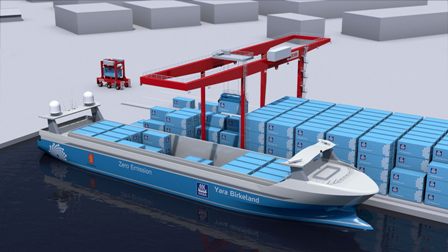In 2020 vessel owners have had to deal with an ‘emissions control world’ for the first time as an unprecedented step-change to the sulphur content allowed in marine fuels was enforced, falling from 3.5% to 0.5% (by fuel mass) globally.
In shipping, emissions of harmful Sulphur-oxides (SOx) and Nitrous-Oxides (NOx) make a very large contribution to their respective global emissions; by burning cheap and dirty heavy-fuel oil, just 15 of the biggest ships emit more NOx and SOx than all the world’s cars put together. Roughly 50,000 ocean-going ships exist in the global fleet. In contrast, 2-3% of global CO2 emissions come from shipping (IMO) compared to 16% for road transport (OICA).
Unlike most other mobility sectors, which predominantly tend to switch partly or completely to a traction battery in order to meet emissions targets, a mixture of solutions have a role to play for boats and ships due to the sheer scale of the power, energy and distance requirements typical from the sector. Solutions vary from batteries and fuel cells to premium fuels, scrubbers and slow steaming.
Of the solutions, none is a silver bullet, and each has its advantages and disadvantages. In 2019, less than 1,000 of the 50,000 fleet had scrubbers installed; even without the disruption on industrial activity from the global COVID-19 outbreak this year, the scrubber industry can only supply around 1,300 in 2020. There are also concerns of a shortage of (more expensive) low-sulphur fuels, amidst a surplus of heavy fuel oil.
IDTechEx expects this shortage of traditional solutions to significantly drive uptake of batteries in the largest ships in order to meet the new stringent emissions regulations.
Today, batteries are most important for leisure boating, ferries and coastal vessels where they have enjoyed steady uptake. Leisure boats are the cars of the marine world: they are usually personally owned and small enough to make the jump to pure electric with today’s technology (typically travelling short distances inland).

Similarly, ferries are the largest vessel capable of becoming pure electric because, with well-planned routes, they can opportunity charge. Coastal vessels, like tug-boats, can hybridise easily with batteries comparable in size to a pure electric car (100kWh), saving hundreds of thousands of dollars by reducing fuel consumption over the course of a year.




